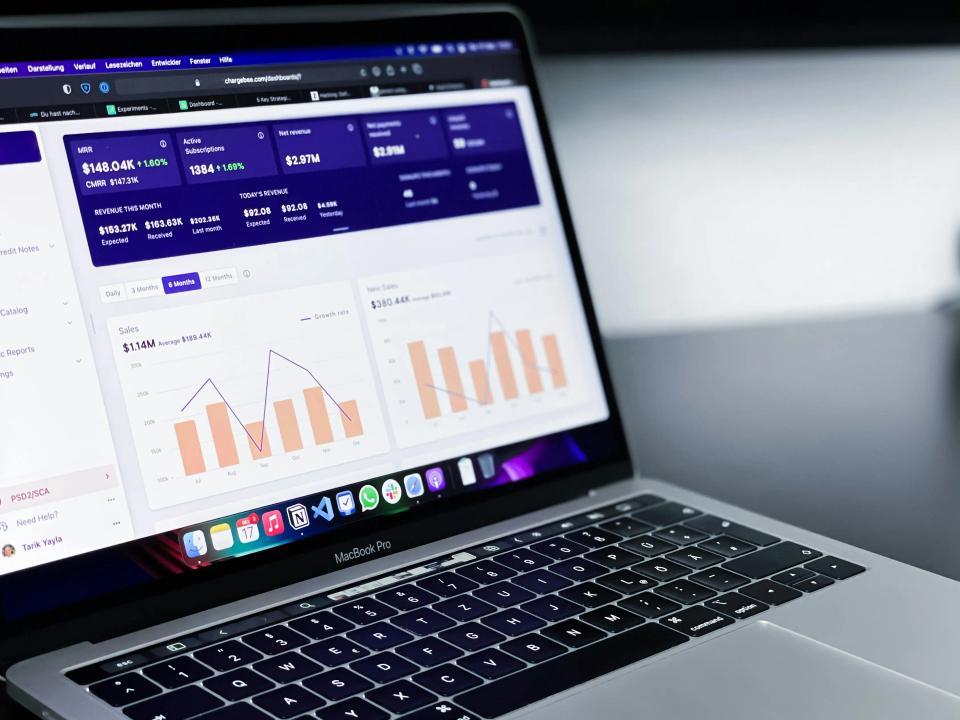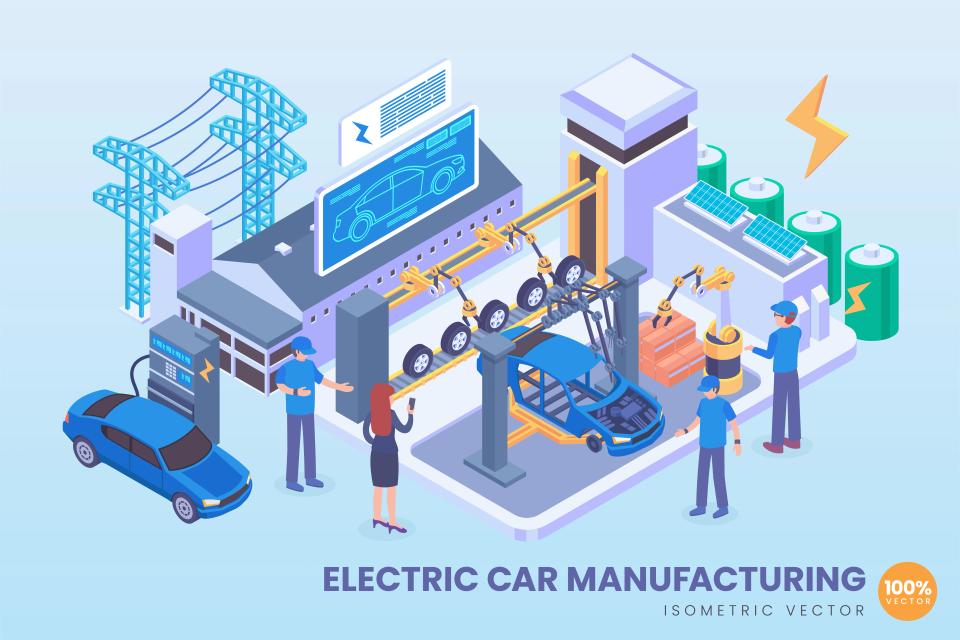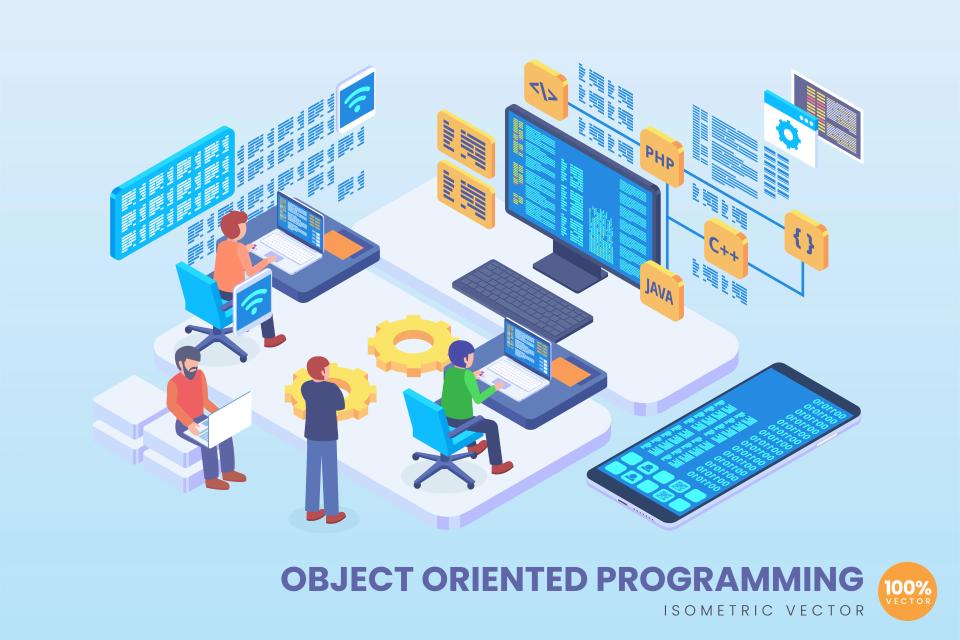Tired of shouting into the void of the crowded real estate market? Are your marketing efforts attracting more curious onlookers than genuinely interested clients? It's a common frustration – watching your precious advertising dollars disappear on unqualified leads and tire-kickers, leading to dismal conversion rates and a growing sense of despair. You crave a direct line to motivated buyers and sellers, a way to cut through the noise and connect with people ready to make a move.
Imagine a world where your ads reach individuals precisely when they're typing "homes for sale in my dream neighborhood" or "best realtor to sell my house fast" into Google. This isn't a fantasy; it's the unparalleled power of strategically implemented Google Ads. This platform offers a laser-focused approach to connect you with high-intent prospects, turning your advertising spend into a lead-generating machine. At CaptivateClick, we understand that strategic digital marketing, especially potent tools like Google Ads, is the cornerstone of brand growth and a consistent flow of quality leads, and we're here to show you how.
Why Google Ads is a Game-Changer for Real Estate Professionals
Stop guessing where your next client will come from. Start connecting with them directly. Google Ads empowers you to reach people actively searching for properties or real estate services, meaning your message lands in front of an audience already demonstrating high intent. As Horton Group highlights, Google Ads enables real estate professionals to target users actively searching, dramatically reducing wasted ad spend.
Zero in on your local goldmine. The beauty of Google Ads for real estate lies in its hyper-local targeting capabilities. You can pinpoint specific neighborhoods, zip codes, or even draw a tight radius around a new listing or open house. Platforms like Zillow Premier Agent, with its 195 million monthly unique visitors, underscore the immense demand for localized real estate information, a demand you can tap into directly.
Know every dollar's mission and its return. With Google Ads, the days of murky marketing ROI are over. You can track precisely how much you spend and, more importantly, what leads you generate from that spend. The average conversion rate for real estate Google Ads is 2.47%, a benchmark you can aim to surpass with smart strategies and diligent tracking.
You're in the driver's seat, always. Google Ads offers unparalleled control and flexibility. Need to adjust your budget mid-month? Want to tweak your bids for a particularly hot keyword? Or perhaps pause a campaign to refine your targeting? You can do it all, on the fly, ensuring your campaigns are always optimized for peak performance.
Leave your rivals wondering how you do it. In the competitive real estate landscape, visibility is everything. By strategically using Google Ads, you get your listings and services in front of motivated prospects before your competitors even know they're looking. This isn't just advertising; it's securing a powerful competitive edge.
Laying the Foundation: Essential Pre-Campaign Setup
Before you even think about launching your first ad, you need a rock-solid foundation. This groundwork is what separates the wildly successful real estate PPC campaigns from the money pits. It’s about clarity, precision, and preparing your digital storefront for an influx of eager prospects.
Defining Your Goals & KPIs for Real Estate PPC Campaigns
What does "success" truly look like for your real estate business when it comes to Google Ads? Is it a flood of form submissions for property inquiries, a phone ringing off the hook with seller leads, or a surge in appointments for showings? Without a clear definition, you're navigating without a compass.
You must define what a "high-quality lead" means to you. Once that's crystal clear, set realistic yet ambitious targets for your Key Performance Indicators (KPIs). Industry benchmarks can be a helpful starting point; for instance, the average Cost Per Lead (CPL) in real estate can be around $116.61, but your specific goals and market will dictate your targets.
Setting these goals isn't just a formality; it's the bedrock of your entire strategy. It allows you to measure progress, identify what’s working, and make data-driven decisions to continuously improve your property lead generation efforts. Aim for glory, but ground your aims in achievable metrics.
Understanding Your Ideal Client (Buyer/Seller Personas)
Who are you really trying to reach with your ads? A generic message to a generic audience yields generic (read: poor) results. You need to dive deep into the minds of your ideal clients.
Are you targeting first-time homebuyers, their hearts a mix of excitement and trepidation? Or perhaps you specialize in the luxury market, catering to discerning clients with specific tastes and expectations. Maybe your niche is investors seeking their next profitable venture, or downsizers looking for a simpler lifestyle. Each of these groups has unique pain points, motivations, and search behaviors.
To truly connect, you must understand these nuances. What keeps them up at night? What are their biggest dreams related to real estate? Crafting detailed buyer and seller personas is essential. Tools like HubSpot’s persona-building features can guide you in developing these profiles, allowing you to tailor your ad copy and targeting with pinpoint accuracy.
Optimizing Your Website/Landing Pages for Conversion
Your Google Ads are the enticing invitation, but your website or landing page is where the real magic—the conversion—needs to happen. You can have the best ads in the world, but if they lead to a confusing, slow, or uninspiring page, your investment is wasted. This is a critical step often overlooked by eager advertisers.
Think of your landing page as the ultimate closing room. It needs clear, compelling Call-to-Actions (CTAs) that tell visitors exactly what to do next. High-quality property photos and videos are non-negotiable; they need to make jaws drop and hearts race. Your contact forms must be incredibly easy to find and use, asking only for essential information.
Furthermore, in today's mobile-first world, your pages must be responsive and load at lightning speed. A slow-loading page is a lead killer. At CaptivateClick, we specialize in crafting conversion-focused web designs and optimizing user experience, ensuring that every click you pay for has the best possible chance of turning into a valuable lead.
Core Strategies for High-Quality Real Estate Lead Generation via Google Ads
With a solid foundation, it's time to delve into the core strategies that will transform your Google Ads account into a lead-generating powerhouse. These are the battle-tested tactics that separate the amateurs from the pros in real estate advertising.
Strategic Keyword Research & Selection
Keywords are the very lifeblood of your Google Ads campaigns; they are the queries your prospects type when searching for your services. Choose them with the precision of a surgeon. Generic terms like "houses for sale" are often too broad and expensive, attracting a wide net of low-intent searchers.
The real gold lies in long-tail keywords. Think specific phrases like 3 bedroom house with pool in downtown austin or condos for sale near riverside park. These longer, more detailed queries are typically used by searchers further along in the buying cycle and signal stronger intent. Moreover, don't just focus on buyer intent (buy home [city]); also consider seller intent keywords (sell my property fast [city]) and local modifiers ([City] real estate agent).
Equally crucial is the diligent use of negative keywords. These are terms for which you don't want your ads to show. For example, if you only handle sales, you'll want to add "rentals," "apartments for rent," and "lease" as negative keywords to avoid wasting clicks. Filtering out irrelevant searches with a robust negative keyword list is paramount for campaign efficiency and a better return on investment.
Mastering Location Targeting
Real estate is inherently local. Your advertising must reflect this truth with unwavering precision. Google Ads offers incredibly powerful location targeting options that allow you to zero in on the specific geographic areas that matter most to your business.
You can target entire cities or states, but the real power for real estate agents often comes from more granular approaches. Target specific zip codes where you have listings or where your ideal clients reside. Utilize radius targeting to show ads to people within a certain distance of a new property or an upcoming open house – imagine reaching everyone within a 5-mile radius of your latest hot listing. This level of specificity ensures your budget is spent reaching genuinely relevant prospects.
Beyond simply including areas, you can also use location bid adjustments. This means you can bid more aggressively for searches coming from high-value neighborhoods or zip codes, maximizing your visibility where it counts most. Conversely, don't forget to exclude areas that are irrelevant to your business to prevent wasted ad spend.
Crafting Compelling Ad Copy & Creatives
Your ad copy is your digital handshake, your first impression. In the fleeting moments a prospect scans search results, your ad needs to grab their attention, resonate with their needs, and compel them to click. This is where art meets science.
Headline power is paramount. Use your target keywords naturally, but also highlight your Unique Selling Propositions (USPs). Instead of a bland "Homes for Sale," try "Stunning Ocean Views: Tour Today!" or "Expert Local Realtor: Sell Faster, Smarter." Focus on the benefits and evoke emotion – what dream are you helping them achieve?
Your descriptions should expand on these benefits, painting a vivid picture of what the searcher stands to gain. And always, always include a strong, clear Call-to-Action (CTA). "View Listings Now," "Get a Free Home Valuation," or "Schedule a Showing Today" tell users exactly what to do next. Don't forget to leverage ad extensions; sitelinks for "New Listings" or "Seller Services," call extensions for direct calls, location extensions for office visibility, and image extensions to showcase properties can significantly boost click-through rates, sometimes by 2-4 times according to Ylopo's findings on retargeting ads which often use rich creatives, and GrowMyAds emphasizes the impact of various ad assets.
Smart Budgeting & Bidding Strategies
Your budget is the fuel for your Google Ads engine. Setting a realistic daily or monthly budget is crucial; it should be an amount you're comfortable investing consistently to achieve your lead generation goals. There's no one-size-fits-all number, but starting too small can limit your ability to gather data and see results.
When it comes to bidding, Google Ads offers several strategies. Manual CPC (Cost Per Click) bidding gives you granular control, allowing you to set specific bids for individual keywords or ad groups – this can be effective for niche markets or when you have very specific performance targets. Automated bidding strategies, such as Maximize Conversions or Target CPA (Cost Per Acquisition), leverage Google's machine learning to optimize bids for your goals, which can be powerful for scaling campaigns once you have sufficient conversion data. KlientBoost offers valuable insights into choosing Google Ads bidding strategies.
Don't overlook ad scheduling. Analyze when your target audience is most active and searching for real estate. You might find that evenings and weekends are peak times. Scheduling your ads to run during these high-intent periods can maximize your budget's impact and connect you with prospects when they're most engaged.
Designing High-Converting Landing Pages Specific to Your Ads
The click is just the first step. The journey from prospect to lead culminates on your landing page. This is where the promise made in your ad must be fulfilled, and where the conversion – the lead capture – takes place. A generic homepage often won't cut it.
Ensure "ad scent": the message and visuals on your landing page should directly reflect the ad that brought the visitor there. If your ad promoted "Luxury Waterfront Condos," the landing page must exclusively feature those types of properties, not a general list of all available homes. This consistency builds trust and reduces bounce rates. Unbounce showcases excellent real estate landing page examples that prioritize this alignment.
Dedicated landing pages for specific campaigns or property types are highly recommended. These pages should have a clear value proposition, minimal distractions (remove unnecessary navigation if possible), and a prominent, easy-to-complete lead capture form. Only ask for essential information – name, email, phone number are typically sufficient to start the conversation. AgentFire also provides tips on creating high-converting real estate landing pages.
Advanced Tactics for Real Estate PPC Campaigns
Once you've mastered the fundamentals, it's time to explore advanced tactics that can take your real estate PPC campaigns to the next level. These strategies are designed to refine your targeting, re-engage interested prospects, and automate aspects of your campaigns for greater efficiency and impact.
Retargeting (Remarketing): The Art of the Second Chance
Think about it: how many times have you visited a website, got distracted, and left without taking action? It happens all the time. Retargeting, also known as remarketing, is your powerful tool to bring those "almost" leads back into your sales funnel.
This strategy involves showing targeted ads to people who have previously visited your website but didn't convert (e.g., fill out a form or call). You can segment these audiences based on their behavior – perhaps they viewed specific property pages, spent a certain amount of time on your site, or even started filling out a contact form but abandoned it. By showing them relevant ads as they browse other sites in the Google Display Network or search on Google again, you remind them of their initial interest.
The impact can be significant. According to Ylopo, remarketing campaigns can achieve 70% higher conversion rates compared to standard advertising efforts. It’s like a friendly, persistent follow-up that keeps your brand top-of-mind and encourages them to complete that desired action.
Utilizing Audience Targeting: Speak Directly to the Ready-to-Act
Why cast a wide net when you can speak directly to individuals who are actively demonstrating an interest in buying or selling property? Google Ads offers sophisticated audience targeting options that allow you to reach these high-intent individuals with remarkable precision.
In-Market Audiences are a game-changer. Google identifies users whose recent online behavior indicates they are "in the market" for specific products or services – including real estate. Targeting these audiences means your ads are shown to people who are actively researching, comparing properties, or looking for real estate agents right now. This is like having a direct line to your hottest prospects.
You can also leverage Custom Audiences. These can be created based on your own data, such as lists of past website visitors (for remarketing, as discussed above) or even customer email lists (Customer Match). This allows for hyper-personalized ad experiences and highly effective targeting, as you're reaching people who already have some familiarity with your brand or fit a specific profile.
Dynamic Search Ads: Automation for Scale
If your agency manages a large and frequently changing inventory of properties, creating and updating individual ads for each listing can be an overwhelming, if not impossible, task. This is where Dynamic Search Ads (DSAs) come to the rescue, offering a smart automation solution.
Instead of you creating ads for every single page on your website, DSAs use the content of your website to automatically generate ads and match them to relevant user searches. Google crawls your site, and when a user's search query is relevant to the content on one of your pages (like a specific property listing), Google dynamically creates an ad with a headline and landing page URL that matches the query and your page content. You still write the description lines.
DSAs are particularly ideal for real estate agencies with extensive and evolving property listings. They help fill in the gaps of your keyword-based campaigns, ensuring you capture relevant searches you might not have thought to target. Neil Patel discusses the utility of DSAs as a way to manage advertising for large inventories efficiently.
Tracking, Analyzing, and Optimizing for Continuous Improvement
Launching your Google Ads campaigns is just the beginning. The real secret to sustained success in property lead generation lies in diligent tracking, insightful analysis, and relentless optimization. This is an ongoing cycle that ensures your ad spend is always working its hardest for you.
Setting Up Conversion Tracking: Know What Works
If you're not tracking conversions, you're essentially flying blind and burning money. Conversion tracking is the mechanism that tells you which ads, keywords, and campaigns are actually generating valuable leads – whether that's a form submission, a phone call, or a specific property inquiry.
Setting up conversion tracking is non-negotiable. This typically involves placing a Google Ads tag on your website (especially on "thank you" pages that appear after a form submission) or importing goals from Google Analytics. This allows Google Ads to report on the actions users take after clicking your ad. WordStream emphasizes that accurate conversion tracking is fundamental to understanding campaign performance and ROI.
Without this data, you have no way of knowing what's effective and what's not. You can't optimize your bids, ad copy, or targeting if you don't know which elements are driving results. Make this your absolute first priority before spending a single dollar on clicks.
Key Metrics to Monitor: Your Campaign's Pulse
Once conversion tracking is in place, you need to keep a close eye on several key metrics. These numbers are the vital signs of your campaign's health and performance. Don't get overwhelmed; focus on the metrics that truly matter for lead generation.
Key metrics include Click-Through Rate (CTR), which indicates how relevant your ads are to searchers – a good CTR for real estate is often cited above 3.7% by sources like Neil Patel. Conversion Rate tells you what percentage of clicks turn into leads. Cost Per Click (CPC) shows how much you're paying for each click, while Cost Per Acquisition/Lead (CPA/CPL) is arguably the most important, revealing how much it costs to generate an actual lead.
Also, pay close attention to your Quality Score. This Google metric rates the quality and relevance of your keywords and ads. A higher Quality Score can lead to lower CPCs and better ad positions. The Close provides a good overview of essential metrics for real estate Google Ads. Regularly monitoring these figures will highlight areas for improvement.
A/B Testing: The Science of Better Ads
Do you think your ad copy is as good as it can get? Or that your landing page is perfectly optimized? There's always room for improvement, and A/B testing (or split testing) is the scientific way to find it.
A/B testing involves creating two or more variations of an ad, landing page element, or even bidding strategy, and then showing them to different segments of your audience to see which one performs better. You could test different headlines, calls to action, button colors, form lengths, or images. The key is to only change one variable at a time so you can accurately attribute any performance difference.
By continuously testing and iterating, you can make incremental improvements that add up to significant gains in your conversion rates and overall campaign effectiveness. Don't assume you know what works best; let the data tell you. This commitment to testing is a hallmark of successful Google Ads for realtors.
Regular Campaign Review & Refinement: Never Settle
Google Ads is not a "set it and forget it" platform. The digital landscape is constantly evolving, competitor strategies change, and your own business goals may shift. To maintain peak performance, regular campaign review and refinement are absolutely essential.
Schedule time weekly or bi-weekly to dive into your campaign data. Analyze which keywords are driving conversions and which are just eating up your budget. Are your bids still competitive yet cost-effective? Is your ad copy still fresh and compelling? Is your location targeting still accurate? Based on this performance data, make adjustments. Pause underperforming keywords or ads, reallocate budget to what's working, refine your targeting, and test new ad variations.
This ongoing process of analysis, adjustment, and optimization is what separates thriving campaigns from stagnant ones. It requires diligence and a commitment to continuous improvement, but it's the surest path to maximizing your ROI from real estate advertising on Google. Consistent campaign refinement, as KlientBoost suggests, is crucial for adapting to market changes and improving results over time.
Conclusion: Build Your Real Estate Empire, One Quality Lead at a Time
The power to truly dominate your local real estate market, to connect with a steady stream of motivated buyers and sellers precisely when they're looking, is not a distant dream. It's a tangible reality made possible by the strategic and skillful execution of Google Ads. When wielded with precision, Google Ads becomes more than just an advertising platform; it becomes your most potent engine for property lead generation.
But remember, this isn't about finding a magic button. True, sustainable success with Google Ads for real estate is forged through consistent effort, sharp, data-driven analysis, and a relentless commitment to optimization. It's about understanding your ideal client deeply, crafting messages that resonate with their core desires, and continuously refining your approach to stay ahead of the curve. Your real estate empire is built one high-quality lead, one successful closing, at a time.
Ready to stop chasing leads and start attracting a flood of qualified buyers and sellers? Ready to transform your real estate lead generation with expert Google Ads management that delivers real, measurable results? CaptivateClick specializes in crafting high-performance real estate PPC campaigns designed to build your pipeline and grow your business. Explore our expert SEM services to see how we can elevate your strategy, and learn more about our comprehensive digital marketing approaches to start building your empire today!
Frequently Asked Questions (FAQs)
How much should I budget for Google Ads in real estate?
There's no single magic number for a Google Ads budget in real estate, as it depends heavily on your market's competitiveness, your specific goals, and the breadth of your campaigns. However, to make a meaningful impact and gather sufficient data for optimization, you need to invest adequately.
For many competitive real estate markets, experts often suggest starting with a monthly budget ranging from $1,000 to $2,500. This allows for enough click volume to test different keywords, ad copy, and targeting strategies effectively. Remember, view this as an investment in acquiring high-quality leads that can turn into significant commissions, not just an expense line item.
Ultimately, your budget should align with your business objectives and your capacity to handle the leads generated. Start with a comfortable yet impactful amount, track your return on ad spend (ROAS) diligently, and scale up as you see positive results.
What's a good conversion rate for real estate Google Ads?
Conversion rates in real estate Google Ads can vary significantly based on numerous factors, including the specific market, the quality and relevance of your ads, the effectiveness of your landing pages, and the precision of your targeting. It's a dynamic figure, not a static benchmark.
That being said, industry reports indicate that the average conversion rate for Google Ads in the real estate sector hovers around 2.47%. While this provides a general reference point, well-optimized campaigns can certainly achieve higher rates. Some highly targeted campaigns focusing on niche segments or using compelling offers might see conversion rates well above this average.
The key is not to fixate on a single number but to focus on continuous improvement. A/B test your ads and landing pages, refine your keyword strategy, and ensure your offers are compelling to consistently push your conversion rates upwards.
Can I target specific demographics with Google Ads for real estate?
Absolutely! Google Ads offers robust demographic targeting capabilities that are incredibly valuable for real estate professionals. You can go far beyond just age and gender to reach highly specific segments of the population.
Google allows you to use Detailed Demographics to target users based on factors like parental status, marital status, education level, homeownership status, and even household income tiers. This means you can tailor your ad messaging to resonate directly with groups like first-time homebuyers, affluent individuals looking for luxury properties, families seeking larger homes, or retirees looking to downsize.
This level of demographic precision ensures that your advertising budget is spent reaching the people most likely to be interested in your specific services or listings, significantly improving the quality of your leads and the efficiency of your campaigns.
How long does it take to see results from Google Ads for real estate?
While the allure of instant results is strong, it's important to approach Google Ads with realistic expectations regarding timelines. While you might see some initial activity relatively quickly, achieving a consistent flow of high-quality leads typically takes a bit of time and optimization.
Generally, you can expect to start seeing initial leads and gathering meaningful performance data within the first 2 to 4 weeks of launching a well-structured campaign. During this initial period, Google's algorithms are also learning and optimizing ad delivery. The first month is often about data collection and initial refinements.
Sustainable success and a strong return on investment usually build over the following months as you continuously analyze performance, A/B test creatives, refine keywords, adjust bids, and optimize landing pages. Patience and persistent optimization are key; Google Ads is a marathon, not a sprint, for building a robust lead pipeline.













